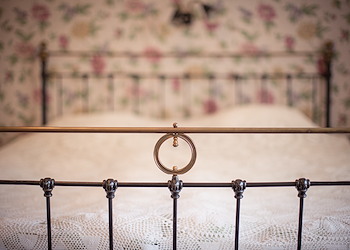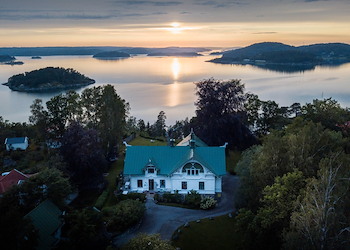
Welcome to Bredfjället
Magical nature and exciting cultural history.
Bredfjället (”The Broad Mountain”; fjell = mountain in Norwegian) is one of Scandinavia’s many fell areas. Twenty square kilometers of forests, lakes and marshes. Berries and mushrooms. Moose and wood grouse, even the occasional wolf and lynx. Everywhere, signs of human culture and farming efforts.
Farmers and the poor used to flee to the fell districts to escape war and unemployment. Today, many of us ”flee” from noise and stress to quiet and beautiful surroundings; to pick berries and mushrooms, to ski, hike, fish, enjoy…
The Swedish fury
In the past, Sweden and Denmark were often at war with each other and Bohuslän was a Danish-Norwegian province.
In 1612 Swedish soldiers cross the national boundary at Göta Älv river and burn down 573 of the county’s 3000 farms. 30 of them are situated at the foot of Bredfjället. After this catastropy – called Brännefejden – many of the peasant families hide in the isolated fell area with lean soils, hoping to create a better life in peace and freedom. Six or seven bigger farms are set up. Almost all of the farm names contain the word ”fjäll”. Norra Fjället was cultivated until 1954, Södra Fjället until 1950. Vargfjället is still inhabited year round.
The collapse of the herring
In 1747, immense quantities of herring enter the Bohuslän Coast. The archipelago is transformed into a Klondyke. Every winter, thousands of laborers and maids from West Sweden find work in the herring industry: gutting and salting the herring and cooking herring oil, as well as building boats, jetties and barrels.
But in 1808, just as suddenly as it had appeared, the herring disappear. The economy crashes. Bohuslän dives into misery again. For the landless herring workers and their oftentimes large families, Bredfjället and other fell areas become a last way out. They settle down, plough small strips of land, keep a cow or a few sheep. It was a poor life in a cold and windy environment.
Revolt against authority
The governor soon gets tired of the people who are using crown’s common land without permission. But when he in 1844 tries to sell the whole Bredfjället area in an auction, the fell residents write a fiery protest letter:
”We thralls who with sweat and hardship have ploughed the worst soil imaginable, shall we now be chased away from our land like cattle?”
Strong women
Now things start to happen. People are given a chance to redeem their cottages and pieces of land. Everyone is eventually granted permission, except for two single women, Anna Jonsdotter and Ellika Johansdotter. But they are strong and stubborn and write a letter to the king. In May 1850 Oscar I agrees to their request.
Today, the forest has taken back almost all of the small fields and meadows. But cattle paths, stonewalls, piles of stone and cottage foundations witness that people once lived here.
Grand nature
Bredfjället is a bedrock platea, its highest point 175 meters above sea level, today covered by hundred-year-old pine and spruce forests. But the landscape is constantly changing. After the ice age, the fell was a treeless moorland and after that, an airy forest with pine, birch, oak and other deciduous trees. The spruce only arrived in the 4th century.
Starting in the 16th century, the forests of Bohuslän were cut down. Timber and firewood were needed in Danish castles and manors, in herring salteries, whale-oil cookeries and lighthouses. Bare hills and heather moors spread. In the 18th century there were barely any trees in Bredfjället.
The fell residents were creative in self-sufficiency. The surrounding forest was their pantry. The heather gave them a sweetener in the form of honey, fuel for heating and cooking, bedding, insulation, medicine, dye for their yarn and seasoning for their beer. It also served as summer and winter food for the cattle.
Potatoes and lingonberries
Masterwort, introduced to Sweden in the 13th century by monks, grew by most farms and huts in Bredfjället. It was believed to be a ”divine medicine” against kidney stones, chills and parasites, but it could also cure sick animals and keep trolls and goblins away. And stimulate the libido – old men became like youngsters! It was mostly the root that was used, fresh or dried.
Blueberries, lingonberries and cranberries were rich in vitamines and minerals and thus an important part of the fell residents’ diet. Lingon naturally contains preservatives and was eaten with porridge and potatoes during winter. Sometimes they ate game or fish from the forest and one of the almost 30 lakes in the area.
The marshes and bogs were diked to grow root vegetables, oat and barley. Everywhere on the slopes people planted potatoes, which was the staple food. Since most of the farms did not own a horse, the soil was drained and loosened by hand every year.
Deciduous trees that grew around the farms were important: oak was used to build skiffs and wheel spokes. The ash was good for saddles and whitebeam for cugs on mill wheels. The hazel produced nuts.
Old forests and butterly meadows
The forests on Bredfjället are today owned by the Uddevalla municipality, Gothenburg canonry, the Simmersrödsstiftelsen foundation as well as private persons. Forestry is practiced with care on a small scale.
The Bredfjället nature reserve was founded in 1989 and is part of the EU’s Natura 2000 network. The reserve covers one fourth of the fell area. Part of the area is to become a ”primaeval forest” – with lichens, moss, woodpeckers, wood grouses. The area around the Vargfjället and Flogfjället farms is a cultural landscape with meadow flowers that attract butterflies and other insects as well as different kinds of birds.
Check out the Bredfjäll guide – and visit us!
At the most, a few hundred people lived in Bredfjället. The fell school was closed in 1946 and is nowadays a museum. In the summer of 2013 and 2014, 20 shows of the ”Bredfjällspelen” outdoor theater were performed here.
Today, Bredfjället attracts many visitors from the surrounding areas. The Ljungskile Friluftsklubb outdoor club, LFK, administers Norra Fjället and has created well kept skiing and hiking trails of various lengths.
The handy Bredfjällsguidet guide book (in Swedish) has ideas for 15 different day trips, containing a map, photographs and facts about the nature and the people. You can get to Norra Fjället by car, 4,5 km from the village of Ljungskile. Most trails start here.
Welcome!
Stefan Edman
Biologist, lecturer, author of 45 books about nature and environment. A Ljungskile resident. www.stefanedman.se


